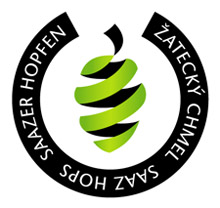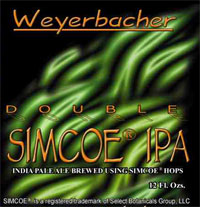Sorry, I’m pleading impending deadlines and we’ve got this trip to start packing for so just the facts from presentations at the Craft Brewers Conference on the status of barley malt and hops supplies. (I know how you’ll miss my prose).
– The barley malt supply will remain tight until at least 2009. Price volatility is here to stay and higher prices (than historical benchmarks) can be expected.
– Prices for barley for malting are competitive with other crops farmers may choose to grow, but the risk is that if the barley is not selected for malting then it becomes feed barley and those prices suck.
– Malting plant capacity is finite. They are built for efficiency, so expansion is not an option. New plants are being built around the world, which requires a chunk of capital.
– Small, but no longer tiny. The smallest plant in the United States (which is smaller than anybody would build these days) has the capacity to handle 90,000 tons a year. Craft brewers’ barley consumption is growing by 20,000 tons a year. More tail than dog.
However, and a theme that ran through both barley and hops presentations, small-batch brewers have grown to a large enough collective size to get the attention of suppliers. We’re well past the time that Boulder Brewery had to lean on Coors in order to get Cascade and Halltertau hops or its malts. Taking us to . . .
– Base hops prices, particularly aroma hops, must go up. Not the crazy “spot” prices that some brewers have paid this year ($40-$45 a pound in Europe), but ongoing prices.
“The cost of aroma hops have not been reflective if the cost of growing,” said Mike Roy of Roy Farms in Yakima Valley. He suggests that $4 per pound for Cascade hops would sustain long term growth. Hallertau would be more like $10-$11 “if the varieties are going to stay in the ground.”
A new balance will be struck. For instance, German growers might replace some aroma fields with high alpha fields. But then industrial brewers, who this year were desperately buying up any alpha they could find, would focus on the new hop (one called Hercules) and leave aroma hops alone. That would leave make more aroma hops available for brewers who use those hops for aroma. Make sense?
– German hop supplies are almost fully sold for 2008-2010, that is “under contract.” Growers generally contract only 80%-90% of what they expect to yield. Some brewers already have contracts through 2018.
– Contracts allow farmers to commit to expansion. They figure a new yard costs $14,000-plus an acre. But that’s not all that’s involved. A drying facility that can handle 1,000 acres costs $3 million. A picker for with a capacity to serve 3,000 acres costs $1.6 million. Selling hops below production costs, as farmers did for years, won’t fund such expenditures.
– Best estimates are that 6,000 to 8,000 new acres will go into the ground this year in the Northwest, a significant increase from the current 33,000. If 7,000 are planted then about 1,000 of those will be aroma hops.
– More transparency, or communication, may help avert future crises. World hop acreage has been shrinking for years, so perhaps brewers shouldn’t have been caught so off guard. Ralph Olson of Hopunion, who moderated the hops panel, said he remembered when old-line breweries such as Pabst, Ranier and Olympia kept a 6-to-12 month inventory of hops.
And German hop farmers were surprised by demand, particularly from craft brewers, for aroma hops. The Brewers Association has commission a Pipeline Committee to facilitate better communication between suppliers and brewers.
– Bottom Line. Several readers here ask if beer prices will do down once hop and barley prices ease. I can’t see that. Any break brewers get from ingredients will simply help offset rising costs elsewhere — energy prices, stainless steel, glass, etc.
I heard plenty of reports that sales in the first quarter 2008 sales were just as robust as 2007, even after price increases kicked in. But, as one brewer said, “It’s next year I’m worried about.”
Thomas Raiser of Barth & Sohn in Germany made an important point: “You’ve been fortunate to be buying hops (for years) at below the cost of production.”
He was talking to the brewers assembled, but the message for beer drinkers is the same.
 A press release from the Hop Growers Union of the Czech Republic indicates the European protected designation of origin
A press release from the Hop Growers Union of the Czech Republic indicates the European protected designation of origin  Simcoe was only released to the brewing world in 2000 and really is a tree in the forest. Only three Northwest hop yards grew the variety in 2007.
Simcoe was only released to the brewing world in 2000 and really is a tree in the forest. Only three Northwest hop yards grew the variety in 2007.